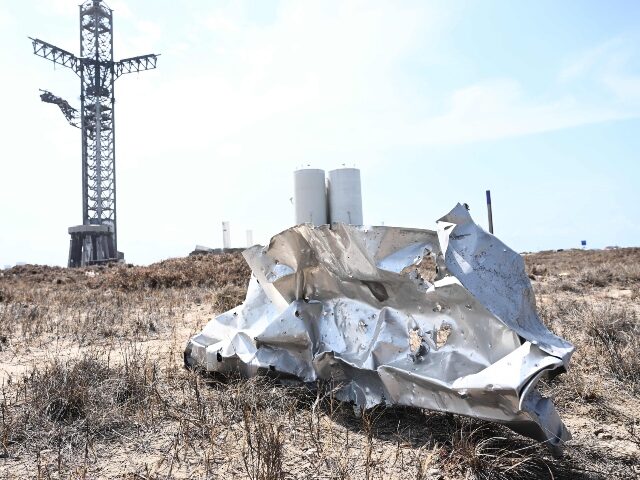Elon Musk’s SpaceX Starship, the world’s largest rocket, faced its first-ever fully stacked test flight last week from the company’s Starbase facility in South Texas, leading to significant damage to the launch pad and raising concerns about the dust and debris created in the surrounding communities.
Space.com reports that the largest rocket in the world, the SpaceX Starship, launched last week from Elon Musk’s Starbase facility in South Texas for its first-ever fully stacked test flight, severely damaging the launch pad and raising concerns about the dust and debris that was generated in the nearby communities.
The 394-foot-tall rocket reached a maximum altitude of 24 miles during the test flight before SpaceX was forced to order its destruction over the Gulf of Mexico due to a number of problems. However, the strong first-stage Raptor engines seriously damaged the surrounding launch infrastructure and blew out a massive crater beneath the orbital launch mount.
The lack of a flame trench, a typical component of pads hosting powerful rocket launches that helps deflect plume exhaust away from the pad during liftoff, was a major factor in the damage and debris. SpaceX CEO Elon Musk stated on Twitter that the company had started building a “massive water-cooled, steel plate to go under the launch mount” three months ago, but it was not ready in time for the debut launch.
Musk explained further, “Aspiring to have no flame diverter in Boca, but this could turn out to be a mistake.” Despite the difficulties, he is still upbeat about the company’s plans, tweeting that “We should be ready to try another Starship launch in 1 to 2 months.”
Concerns were raised by the rocket’s engine dust that also affected Port Isabel, a nearby city. Even though it is unknown whether the dust contains any chemicals, breathing particulate matter can be harmful to people’s health. The FAA had previously determined that a Starship launch would not have a significant impact on air quality, but the dust issues have raised concerns about the world’s largest rocket’s potential environmental effects.
In response to the dust concerns, an FAA spokesperson told Quartz, “The FAA is providing oversight to ensure SpaceX complies with its FAA-approved mishap investigation plan and other regulatory requirements. The FAA will review, and must approve, the final report before the mishap investigation can be closed.”
Why SpaceX did not use a water deluge system or a flame diversion system, which are part of the launch setup for its Falcon rockets, is unknown. According to environmental impact analysis specialist Eric Roesch, it might have taken the U.S. Army Corps of Engineers months or years to approve the construction of such infrastructure, time that SpaceX did not want to invest. In 2022, SpaceX withdrew its request for such a permit after choosing not to look at potential alternate locations for Starship, such as its launch facilities at Cape Canaveral.
The failure of several Starship engines and the subsequent failure of the craft to enter space may have been caused in part by the debris from the launch pad. A thorough engineering analysis is necessary before deciding whether there are any connections between destruction at the site and destruction in flight.
Before attempting another launch, SpaceX must make necessary repairs to its launch infrastructure, address environmental issues, and obtain the FAA’s approval once more.
Read more at Space.com here.
Lucas Nolan is a reporter for Breitbart News covering issues of free speech and online censorship. Follow him on Twitter @LucasNolan



COMMENTS
Please let us know if you're having issues with commenting.